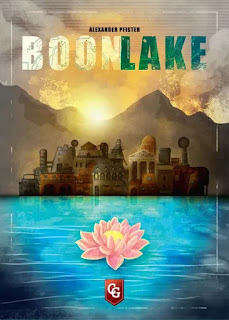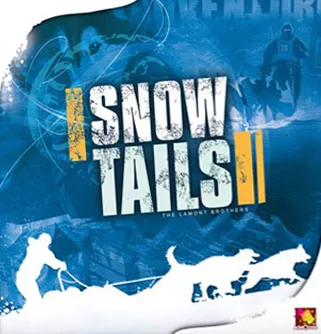(Previous chapter: In the Belly of the Beast)
“Jim
will see you now.”
These
momentous words were uttered by Jim’s assistant Chris(tine) Butler—who would in
time become a dear friend of mine—as I tried not to squirm too much in my chair
right outside of the boss’s office.
Remember I had been flown all the way from Montreal to San Francisco and spent the
morning going through four interviews on the hallowed grounds of Skywalker
Ranch, before coming to a rest on the doorstep of the Marketing VP—the guy who would
make the ultimate decision as to my fate within the Lucasfilm organization.
In
a late-nineties world that was just learning to harness the power of the
Internet, my future position as lead writer (and soon-to-be editor) of
starwars.com fell somewhere between the Marketing and Web teams. That’s one
reason the interview process was so grueling to begin with: managers tried to
see whether the fresh recruit knew what to make of that new tool, how to use it
to maximum effect, what pitfalls to avoid, and the kind of future-proofing the
entire online enterprise might require—because there were myriad things in that
area they didn’t quite know themselves. (Frankly, I wasn’t too sure about most
of that stuff, but I believe I succeeded in selling my abilities well enough
for everyone to trust that what I didn’t know, I would quickly figure out.)
They
also needed to ensure I was someone who knew and loved Star Wars well enough, but that I would know not to behave like a delirious fanboy around the place, and could
keep a professional composure around celebrities I might pass by on the Ranch,
or else directly interact with in the course of my reportorial duties. (I came
the closest to losing it when, half a year later, I spent an afternoon with
legendary sound designer Ben Burtt in his Skywalker Sound studio—a story for
another day.) They wanted to pick the right addition to their very exclusive
family, and I couldn’t blame them. But it made the whole thing nerve wracking
in the extreme.
When
David West Reynolds, Steve Sansweet and I got back from lunch, the VP of
Marketing was in the thick of things with some other concern; it sounded like
he hadn’t even left his office to have a bite. By that point I could hardly
breathe, so I asked if there was time for me to get back outside and clear my head
a little before the big interview. Sansweet nodded with a smile: “Of course,
kid.”
(He
still calls me “kid” to this day, and I’ve racked up 49 revolutions around the
sun at the time of this writing. Whenever Han Solo says it to Luke Skywalker in
one of the Star Wars movies, I hear
my friend Steve.)
I
quickly went down the Brook House exterior staircase and took a few steps
towards a copse of trees before the sight of the Main House stopped me dead in
my tracks. I had laid eyes on the faux Victorian beauty many times since my
arrival earlier that morning, but now it was talking to me.
And
it was telling me I had already won.
Not
that earning the position was a certainty, of course. But whether or not this
adventure turned into a job, I had been flown to Lucasfilm on George’s dime,
and I was standing right smack in the middle of Skywalker Ranch, that mythical
place that’s never open to the public. How many people get to experience that?
Up until a few weeks prior, I had been wondering if I’d ever get a chance to
visit the Ranch in any capacity. And now I was there, magically transported
into the heart of all things Star Wars and Indiana Jones, two universes that had
fueled my childhood.
I
believe that’s what saved me—the thought that even given a catastrophic outcome
(not getting the job), I had accomplished something I never quite believed
would happen. I started breathing again, I felt my entire body relax, and I
walked back to the Brook House with renewed confidence.
Chris
smiled at me as soon as I reached the mezzanine where Jim Ward’s office was
located. “Have a seat. Shouldn’t take long.”
I
sat in the chair she was nodding at, attempting to look cool and comfortable.
The boss was still on the phone, sounding as agitated as when I’d left; I did
my best to blank that out. Against the opposite wall stood a pristine Star Wars pinball machine, no doubt a
gift from the manufacturer, and one that nobody ever used. Despite being
plugged in and fully functional, its role was decorative—something I would eventually
come to change with regular Friday pinball tournaments. (I only ever won a couple
of them.)
Then
the conversation on the other side of the heavy wooden door ceased, Chris got a
quick call at her desk, and she turned to me.
“Jim will see you now.”
Back
then Jim Ward was a beast of a man: tall, big and with a voice to make Zeus
himself shake in his sandals. Saying he made an impression is selling the experience
short. (He has since slimmed down a bit, which I’m sure doesn’t take anything
away from his formidable presence.) He
also had smart, piercing blue eyes that connected with anyone he crossed paths
with. A veteran of Apple, Nike and Microsoft, Jim didn’t take bullshit from
anyone, and certainly didn’t spread any of it around. The first time you shook
hands with him—when his large and powerful mitt swallowed your fingers whole—you
knew the man was the real deal. You could quite literally feel it.
“Have a seat!”
We
sat on a pair of short couches that flanked an elongated coffee table, between
Jim’s desk and a small conference table. It wasn’t a large office by any means,
but a comfortable one, with some nice windows and a small refreshments fridge
in one corner. As with every enclosed space on the Ranch, it looked and felt
much more like a living room than an office.
By
that point the calming effect of my walk outside was starting to fade out like an 80s pop song, but Jim
wasted no time putting me at ease. He proceeded to tell me about himself, asked about my
studies (philosophy & literature!), my love of Star Wars, my trip to Tunisia, the morning’s four job interviews...
and then pointed to a stack of Star Wars
CCG cards on the coffee table between us.
Which
I had noticed the instant I walked into his office, to be sure.
I
thought Jim was following up on the Tunisia question, how the results of that
game’s world championship had whisked me away to northern Africa, and so on.
But that’s not what he had in mind.
I
would later understand that everyone before Jim had vetted me on pretty much
everything they needed to confirm about my abilities. The one, final matter
keeping Jim on the fence was my capacity to clearly express complex concepts in
English—because I had been raised in French. And the way he decided to go about
figuring this out told me a whole lot about the man I was about to start
working for.
“I never play games, I just don’t have the time
for it,” Jim said. “So I’d like you to teach me—a complete outsider—how to play
this.”
And
so it was that my fifth and final interview involved teaching the Marketing VP
of Lucasfilm the rules of the strategy game that had brought me there in the
first place. To paraphrase an oft-quoted line from the original Star Wars movie, the circle was now
complete.
It
went splendidly: years of teaching all kinds of games to all sorts of strangers
had prepared me for this like nothing else could have. And while I’m not sure
Jim grasped every nuance of that rather complex card game, he seemed to
understand the core concepts and some of the strategy.
At
the end of my presentation, he stood up, shook my hand once more and thanked me
for teaching him. (How often do you hear something like that in a job
interview?)
“We’ll be in touch.”
A
few hours later, while I was enjoying an early evening at my friend (and future
coworker) David’s place about 30 minutes away from Skywalker Ranch, the phone
rang and David picked up. He went through a series of “yeses,” “okays” and “got
its” before hanging up and turning to me with a straight face. “The job is yours
if you want it,” he announced, his face lighting up like a Christmas tree.
IF I wanted it? I’d never wanted anything that
badly in my life.
* * *
The
next few weeks flew by in a blur. I had to get ready to move, say goodbye to my
old life and prepare to start a new one, and go through the legal process of
earning the right to live and work in the US of A. Which boiled down to
Lucasfilm needing to demonstrate that nobody else in America could do the job
(!), and my having to wait for the immigration department to approve my
papers—at the airport, while I sat in the adjoining room (!!)—and grant me a
work visa. (I believe I sweated more during the half hour I waited there than
during my entire day of job interviews at Lucasfilm.)
It
all worked out in the end, with Lucasfilm not only paying for my relocation
(which included movers packing up all of my stuff and loading it onto an
18-wheeler that would meet me in San Francisco a month down the line), but also
setting me up with a hotel room and a rental car for a few weeks, until I could
find an apartment and acquire my own vehicle.
I
showed up at the Skywalker Ranch gate—on my own—for the first time on a sunny
Thursday morning in the early autumn of northern California, having just driven
through a forest of giant redwoods where they shot the speeder bike chase
sequence for Return of the Jedi. The simple
fact that the guard at the gate let me through was exhilarating enough, but the
sentiment paled in comparison to the bone-rattling thrill I felt driving out onto
the grounds of the Ranch.
I
had made it.
Yet,
despite everything I had to brave to win my small place inside George’s empire,
it was clear to me that my Lucasfilm adventure was just getting started. I had an
entire universe waiting for me.
My
old Mazda 626 parked under the Carriage House, I walked across the Ranch’s
backyard and made my way to the Brook House. My Brook House, I found myself trying to think. I still felt like an
impostor, mind you, but I was working hard to convince my stunned brain that I belonged
in that fantastical, otherworldly place.
As
I got close enough to hear the titular brook trickling under the building, David
stepped out onto the landing at the top of the stairs and spread his arms in a welcoming
gesture. His mouth broke into a gleaming smile as I climbed the steps that would
take me to my office and my first day of work as a Lucasfilm employee; his extended
right hand seemed all at once like an offer to help vanquish the few remaining stairs that separated us, and a congratulatory demonstration.
I
can still remember the look in his eyes when I reached the top of the staircase
and took his hand. He only said, “Welcome home.”
And
then we went inside.
(Next chapter: Stag Night)
(Full series here)
# # #














